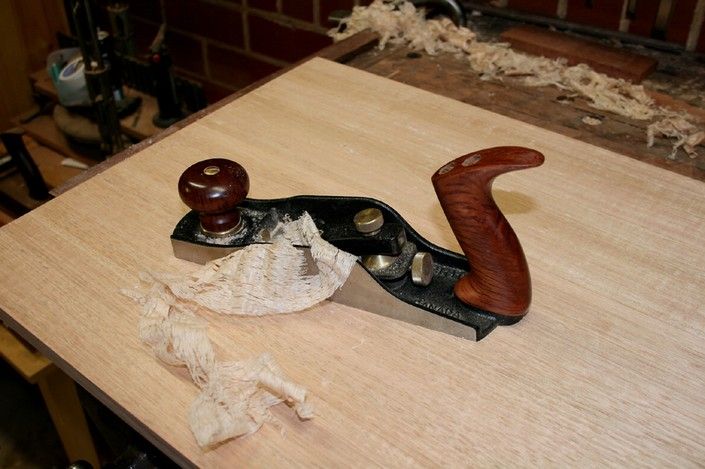This plane has a 12° bed angle and a 38° blade angle giving an effective pitch of 50°, what is the real difference between this and a bevel down plane with a bed angle of 50°?
Hi xy
Further to all that has been said, the BU plane will be less effort to push than the BD plane. The BU plane has a low centre of gravity and the centre of effort is closer to the cutting direction. This is increasingly noticeable as the cutting angle increases. I'd much rather push a BU plane with a cutting angle of 60 degrees than a BD plane of the same cutting angle (unless the latter is a woodie

).
In addition to the BU Smoother, the LA Smoother is a another plane for serious consideration. Some will prefer that it is smaller and lighter. It lacks nothing in performance, and may also be used on a shooting board.
Lee Valley (alias Veritas) sure know how to confuse people.... In leevalleyspeak if it's 'Low Angle" it's got flat sides; if it's 'Bevel Up' it's got curved sides (even though 'bevel up' and 'low angle' are almost always the same thing)
Hi vann
I have another perspective.
Originally these planes were known as "low angle" planes owing to the angle of the bed (12 degrees, compared the the 45 degrees of the bench planes). That is, the original Stanley #62 (LN call this the #62 and LV call it the LA Jack) and #164 (LN call it the #164 and LV call it the LA Smoother) were the basis for the designs.
Further, originally these planes were only used with a 25 degree bevel, and thought of as planes for end grain. It dawned on us that the cutting angles were dependent on the bevel angle, not the bed angle, and so were born planes with high cutting angles. As the emphasis moved to emphasize the design of the plane, the focus increasingly went to its bevel up facility. I recall saying to Rob Lee when playing with a prototype BU Smoother that the planes should all be renamed BU planes. Obviously they were of the same opinion because later that is how they came to be known (I take no credit for this, just thinking along the same lines).
Regards from Perth
Derek

































